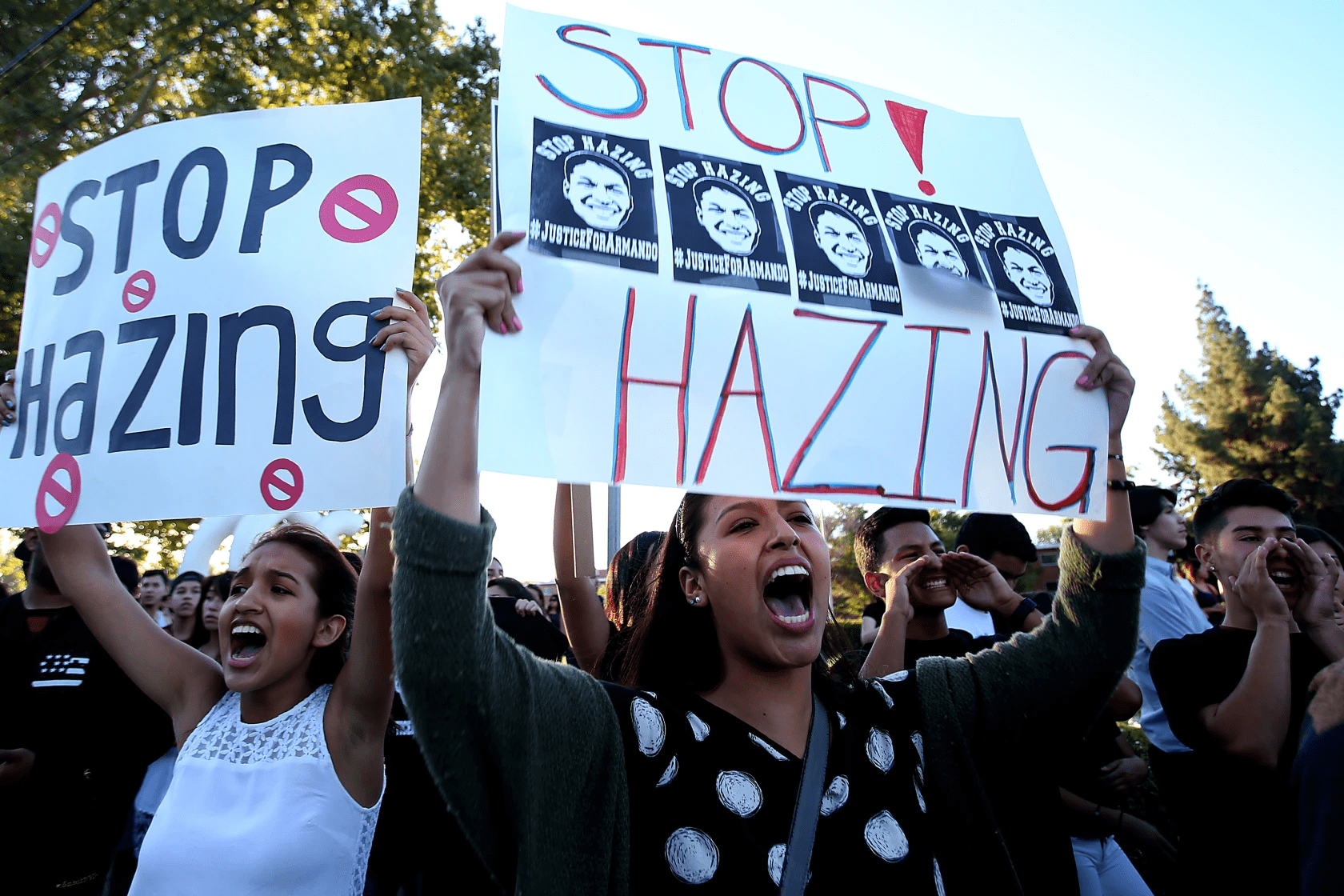
What Is Hazing in College? Imagine you join a new group, let’s say the tech club, greek life, or literature group, and you’re asked to perform a welcoming ritual. What comes to mind? Most expect to sing a song, while others predict a peace offering to settle in. Unfortunately, that’s not the case when it comes to hazing.
You see, instead of fun, silly new member rituals, hazing involves humiliating and degrading activities. And the sad part is that a lack of willingness to participate doesn’t spare the new member. Instead, those new members are subject to abusive or endangering activities that must be done before they’re recognized as part of the group.
So, what else does hazing entail, and how do you fish it out? Read on to discover the all-important facts about hazing.
- Facts To Know About Hazing
- Examples Of Hazing
- How To Determine If the Activity Is Hazing or Not
- What Is Hazing in College Football and How to Reduce Hazing in Sport Teams
Facts To Know About Hazing
The common fact about hazing is that it involves acts that knowingly expose the victim to emotional or physical harm. For instance, hazing includes physical assault, battery, kidnapping, and other endangering acts.
Hazing is made up of three components. These include:
- The presence of a group where the actions occur
- Acts that are endangering and humiliating
- Negligence of the individual’s consent or stance
These components form the basis of hazing and further show how demoralizing the concept is. Moreover, there are multiple data and prominent features of hazing that you need to know.
- In colleges, hazing constitutes 55% of the activities in clubs, groups, teams, and student organizations.
- It starts as intimidation and proceeds into bullying and/or harassment that turns violent.
- Expert on hazing, Hank Nuwer, has stated that most deaths caused by hazing involve alcohol (up to 82% of cases).
- Hazing stems from an unhealthy urge for power and control.
- Hazing poses one of the biggest obstacles to academic activities and can cause total hindrance if not reported.
- It creates injury hazards to individuals and groups
- The individuals or groups involved are constantly degraded and humiliated
- It often causes the willful destruction of private properties for the sole purpose of being welcomed into a group.
- Hazing includes acts inflicted by one individual onto another or a group of people.
- Hazing results in the killing of self-esteem and leads to emotional damage.
- It’s not limited to athlete groups or clubs but spreads across multiple organizations in multiple environments.
Examples Of Hazing
Through the facts about hazing, it becomes easier to identify its significant examples and types. To make things easy, hazing has been split into three groups, each comprising its unique examples.
1. Subtle Hazing
In the case of subtle hazing, the victims are always new members/rookies of a group. They are subjected to behaviors that breach all reasonable standards of respect. At the same time, these rookies/new members are subjected to ridicule, embarrassment, and humiliation.
The problem with subtle hazing is that victims feel the need to endure those acts rather than report or stand up for themselves. They do so because they yearn to feel accepted in the group. Another reason is that most victims see subtle hazing as pretty much harmless.
Major examples of subtle hazing include:
- Deception
- Unfair assignment of tasks
- Denying rookies and new members their privileges
- Isolating rookies and new members
- Making rookies into personal servants
2. Violent Hazing
Unlike subtle hazing, which is majorly harmless, violent hazing includes acts that pose physical, emotional, and/or psychological damage, which may lead to depression in college students. Such activities are dangerous, and the victims are often intimidated and bullied by power-hungry individuals. Examples of violent hazing include:
- Forced alcohol or drug consumption
- Bondage
- Public nudity
- Illegal activities, e.g., vandalism, theft, or kidnapping
- Forced substance consumption
- Subjecting individuals to uncomfortable situations
- Activities that go against campus rules
3. Harassment Hazing
Finally, harassment hazing is more focused on frustrating and causing discomfort to the new members. These new members, desperate to feel like a part of the group, endure emotional anguish and physical trauma.
Basically, this form of hazing seeks to cause excessive stress and can, in more severe cases, turn into violent hazing. Examples include:
- Verbal abuse
- Threats – direct or implied
- Degrading and crude acts
- Forced participation in strenuous activities
- Forcing newbies to put on humiliating outfits
- Forced engagement in public stunts
- Sexual stimulations
- Any form of harassment
How To Determine If the Activity Is Hazing or Not
Hazing happens everywhere around us and in almost all instances. However, it’s difficult to curb these acts due to insufficient reports. Victims either choose to endure hazing or are too scared to report their bullies.
Therefore, we have to rely on certain occurrences and traits of people going through hazing to figure it out. Curious about how to determine hazing? Here are some signs to look out for:
- Withdrawal from activities and social groups
- Prolonged absence from dorm or home for days at a time
- Forced carrying of items to class and halls
- Physical and mental exhaustion and withdrawal from the usual way of life
- Regular attendance at late-night tasks
- Walking to class in groups
- Sleep deprivation
- Fatigue, soreness, pains, and sadness
While the presence of one or some of these factors does not always indicate hazing, it’s important to keep a close eye on when they occur.
What Is Hazing in College Football and How to Reduce Hazing in Sport Teams
Like every other setting, hazing in football teams or other extracurricular activities in college involves degrading and humiliating activities. New rookies looking to join college football teams are forced to engage in acts that leave them vulnerable to embarrassment.
It involves pranks such as being thrown in mud or pools, forced into drinking alcohol, vandalizing properties, or getting beaten. They pose not just physical but also psychological and emotional harm. Hence, it’s important to curb hazing for good.
The key to stopping hazing, or reducing it to the minimum, lies in the development of strict policies. These policies emphasize zero tolerance for hazing, bullying, and other forms of humiliation. At the same time, coaches should be vigilant enough to spot these incidences and work toward eliminating them at the source. Defaulters should be dealt serious punishments, and victims should be protected.
Ultimately, it takes the combined efforts of coaches, lecturers, administrators, and even the boldness of individuals to put a stop to hazing in colleges and society at large.





